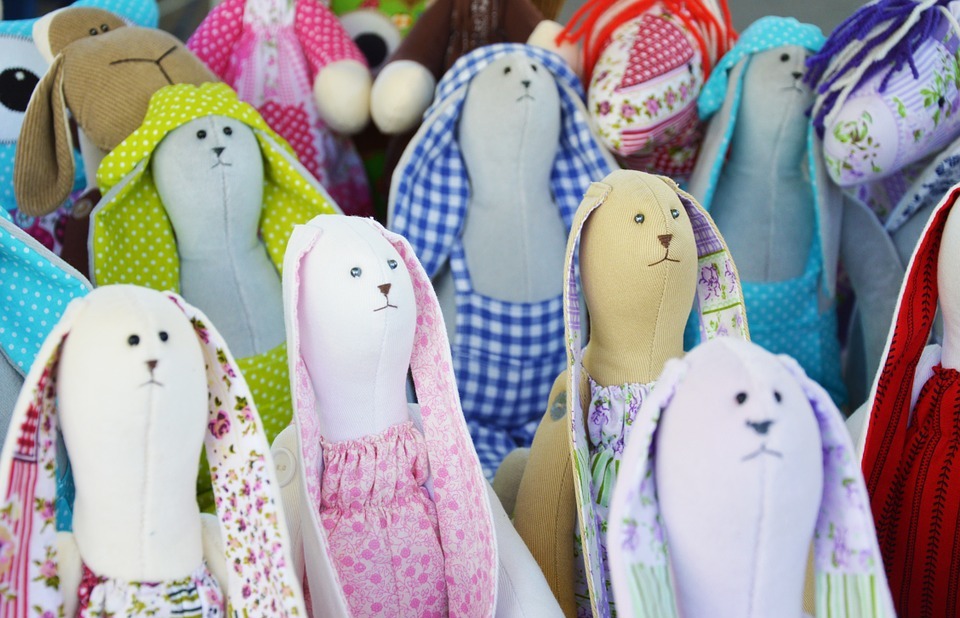This comprehensive guide delves into the intriguing world of rabbit hibernation, exploring whether these furry creatures engage in this fascinating biological process. We will examine the concept of hibernation, its purpose, and its role in the lives of different animal species. We will then delve into the specific case of rabbits, discussing their physiological adaptations and behaviours, and providing definitive answers to the question of whether rabbits hibernate. Furthermore, we will address common misconceptions and myths surrounding rabbit hibernation, providing clarity and evidence-based insights. Finally, we will explore frequently asked questions about rabbit hibernation, offering comprehensive answers to address any lingering queries.
Part 1: Understanding Hibernation

1.1 Defining Hibernation: A State of Suspended Animation
Hibernation is a state of inactivity and lowered metabolic rate that some animals enter during periods of cold temperatures and limited food availability. This physiological adaptation allows animals to conserve energy and survive harsh winter conditions. During hibernation, the animal's body temperature drops significantly, their heart rate and breathing slow down, and their metabolic processes are reduced to a minimum. This state of suspended animation helps them conserve precious energy resources.
1.2 The Purpose of Hibernation: Surviving the Winter
The primary purpose of hibernation is to survive the winter months when food is scarce and the weather is cold. Hibernation allows animals to conserve energy by significantly lowering their metabolic rate and reducing their need for food. By reducing their energy expenditure, they can survive on the limited food reserves they have accumulated during the warmer months.
1.3 Animals That Hibernate: A Diverse Group
Numerous animal species, including mammals and reptiles, exhibit hibernation behaviour. Some well-known hibernators include:
- Bears: Famous for their long periods of hibernation in dens, they rely on fat reserves accumulated during the summer months.
- Squirrels: Ground squirrels and chipmunks are known to hibernate for several months, entering a state of torpor in underground burrows.
- Bats: Many bat species hibernate during the winter, often gathering in large groups in caves or mines.
- Snakes: Many snake species hibernate in groups, often in burrows or under rocks to escape the cold.
- Turtles: Some turtle species hibernate in mud at the bottom of ponds or lakes, breathing air through their skin.
Part 2: Rabbit Physiology and Adaptations: Are They Built for Hibernation?

2.1 Body Temperature Regulation: Maintaining a Constant Core Temperature
Rabbits are homeothermic animals, meaning they can regulate their own body temperature. They maintain a stable core temperature, typically between 38.5°C and 39.5°C. This means that their bodies are designed to keep a consistent internal temperature, even when the external temperature fluctuates.
2.2 Food and Energy Requirements: A Constant Need for Fuel
Rabbits are herbivores and require a constant supply of fresh, high-quality vegetation to meet their energy needs. Their digestive systems are designed to efficiently extract nutrients from plant material, but this process requires a continuous intake of food. Unlike hibernators, rabbits cannot survive for extended periods without eating.
2.3 Seasonal Adaptations: Adjusting to Changes in the Environment
Rabbits exhibit some seasonal adaptations, such as changes in their fur coat thickness and reproductive cycles. In winter, their fur becomes thicker and denser to provide insulation against the cold. Their reproductive cycles may also shift, with some species breeding more actively in the spring and summer months when food is abundant. However, these adaptations are primarily driven by changes in day length and temperature, not by a need to hibernate.
Part 3: Do Rabbits Hibernate? Separating Fact from Fiction
3.1 The Myth of Rabbit Hibernation: A Common Misconception
There is a common misconception that rabbits hibernate. However, this is not true. Rabbits do not hibernate in the traditional sense, meaning they do not enter a state of prolonged torpor with significantly reduced metabolic rate and body temperature.
3.2 Evidence Against Hibernation: The Scientific Perspective
Several factors contribute to the conclusion that rabbits do not hibernate:
- Metabolic Rate: Rabbits maintain a relatively high metabolic rate, making it difficult for them to significantly reduce their energy expenditure as required for hibernation. Their bodies are constantly burning energy to maintain their core temperature and support their active lifestyle.
- Body Temperature: Rabbits do not exhibit a significant drop in body temperature, which is characteristic of hibernating animals. Their core temperature remains relatively stable throughout the year.
- Food Requirements: Rabbits need to eat regularly to maintain their energy levels, and their digestive system is not adapted for long periods of food deprivation. Unlike hibernators, which rely on stored energy reserves, rabbits require a constant supply of fresh vegetation.
- Behavioural Patterns: Rabbits remain active throughout the year, even during winter, and do not exhibit the prolonged periods of torpor associated with hibernation. They continue to forage, socialize, and engage in their normal activities, even during cold weather.
3.3 Seasonal Adaptations in Rabbits: How They Cope with Winter
While rabbits do not hibernate, they do exhibit some seasonal adaptations to cope with colder temperatures. These include:
- Thicker Fur: In the winter months, rabbits grow a thicker coat of fur to provide insulation and warmth. This adaptation helps them conserve heat and maintain their core body temperature even in cold weather.
- Increased Food Intake: Rabbits may increase their food intake in the winter to compensate for the energy expended maintaining their body temperature. They need to eat more to provide their bodies with the energy they need to stay warm.
- Burrowing Behaviour: Rabbits may spend more time in their burrows during the winter to seek shelter from the cold and wind. Their burrows provide a protected environment where they can huddle together for warmth.
Part 4: Frequently Asked Questions: Addressing Common Queries
4.1 Do rabbits sleep all winter?
No, rabbits do not sleep all winter. They remain active throughout the year, although they may spend more time in their burrows during cold weather. They may also be less active in the early morning and late evening when temperatures are coldest.
4.2 What do rabbits do in the winter?
In winter, rabbits typically remain active, seeking shelter in their burrows, and foraging for food. They may also grow a thicker coat of fur for insulation. While their activity levels may be slightly reduced, they do not become dormant.
4.3 Can rabbits get cold?
Yes, rabbits can get cold, especially in winter. They are sensitive to cold temperatures and require adequate shelter and protection. Their small size and thin layer of fat make them susceptible to hypothermia if they are exposed to prolonged cold.
4.4 How do I keep my rabbit warm in winter?
To keep your rabbit warm in winter, provide them with a warm, dry, draft-free environment, such as an insulated hutch or indoor enclosure. You can also offer them additional bedding for warmth, such as hay or shredded paper.
4.5 Can rabbits hibernate in the wild?
No, rabbits do not hibernate in the wild. They have evolved to adapt to colder temperatures through other means, such as growing thicker fur and seeking shelter.
4.6 Is it normal for rabbits to sleep more in winter?
Rabbits may sleep slightly more in the winter, but this is not a sign of hibernation. They are simply conserving energy during periods of lower activity. This is a natural behaviour, but it is important to ensure that your rabbit has access to food and water at all times, even during the winter months.
Part 5: Understanding Rabbit Behavior in Winter: A Closer Look
5.1 Seasonal Changes in Rabbit Behaviour
As winter approaches, rabbits exhibit a number of behavioural changes. Their activity levels may decrease slightly, and they may spend more time in their burrows for shelter and warmth. They are more likely to be seen foraging in the warmer hours of the day and may gather in groups for additional warmth.
5.2 Social Interactions During Winter
In the wild, rabbits often live in social groups called warrens. During the winter, these groups may come together more frequently, providing warmth and support to each other.
5.3 The Importance of Shelter
Rabbits rely heavily on their burrows for protection from the cold. Their burrows provide insulation and a safe haven from predators. If you have a pet rabbit, it is crucial to ensure they have a warm, dry, and draft-free hutch or enclosure.
Part 6: Conclusion: Embracing the Winter Wonders of Rabbits
While the myth of rabbit hibernation persists, it is important to understand that rabbits do not engage in true hibernation. They are active throughout the year and rely on other adaptations, such as thicker fur and increased food intake, to cope with cold temperatures. By understanding the physiological and behavioural adaptations of rabbits, we can better appreciate these fascinating creatures and provide them with the proper care and environment to thrive.
Rabbits, with their unique winter adaptations and behaviours, remind us that the natural world is filled with wonder and resilience. By understanding their strategies for coping with the cold, we can better appreciate their ability to thrive even in the harshest conditions.
Everyone is watching
-

Do Rabbits Lay Eggs? (The Surprising Truth)
OTHER TYPES OF PETSThis article will unravel the common misconception that rabbits lay eggs, exploring the fascinating world of r...
-

What's a Group of Rabbits Called? (A Comprehensive Guide)
OTHER TYPES OF PETSThis article delves into the fascinating world of rabbits, exploring the various terms used to describe a grou...
-

Can Rabbits Eat Grapes? A Guide to Safe Rabbit Treats
OTHER TYPES OF PETSThis comprehensive guide will explore the safety and suitability of grapes for rabbits, providing detailed inf...
-

Predators That Hunt Rabbits: A Guide to Natural Enemies
OTHER TYPES OF PETSI've always been fascinated by the circle of life, that delicate dance between predator and prey. Growing up ...
-

Are Rabbits Nocturnal Animals?
OTHER TYPES OF PETSThe question of whether rabbits are nocturnal animals is a fascinating one, with a surprisingly complex answer...
